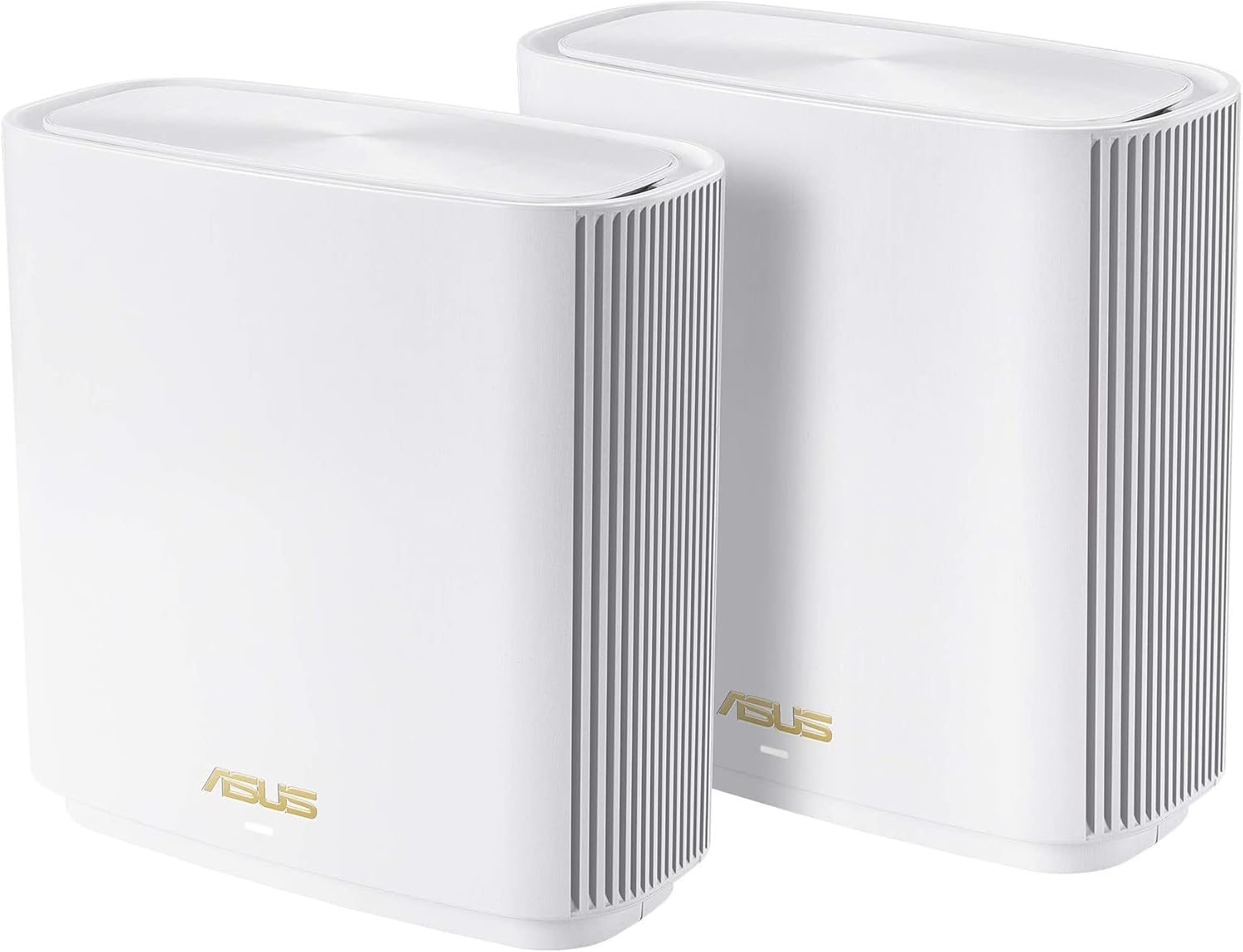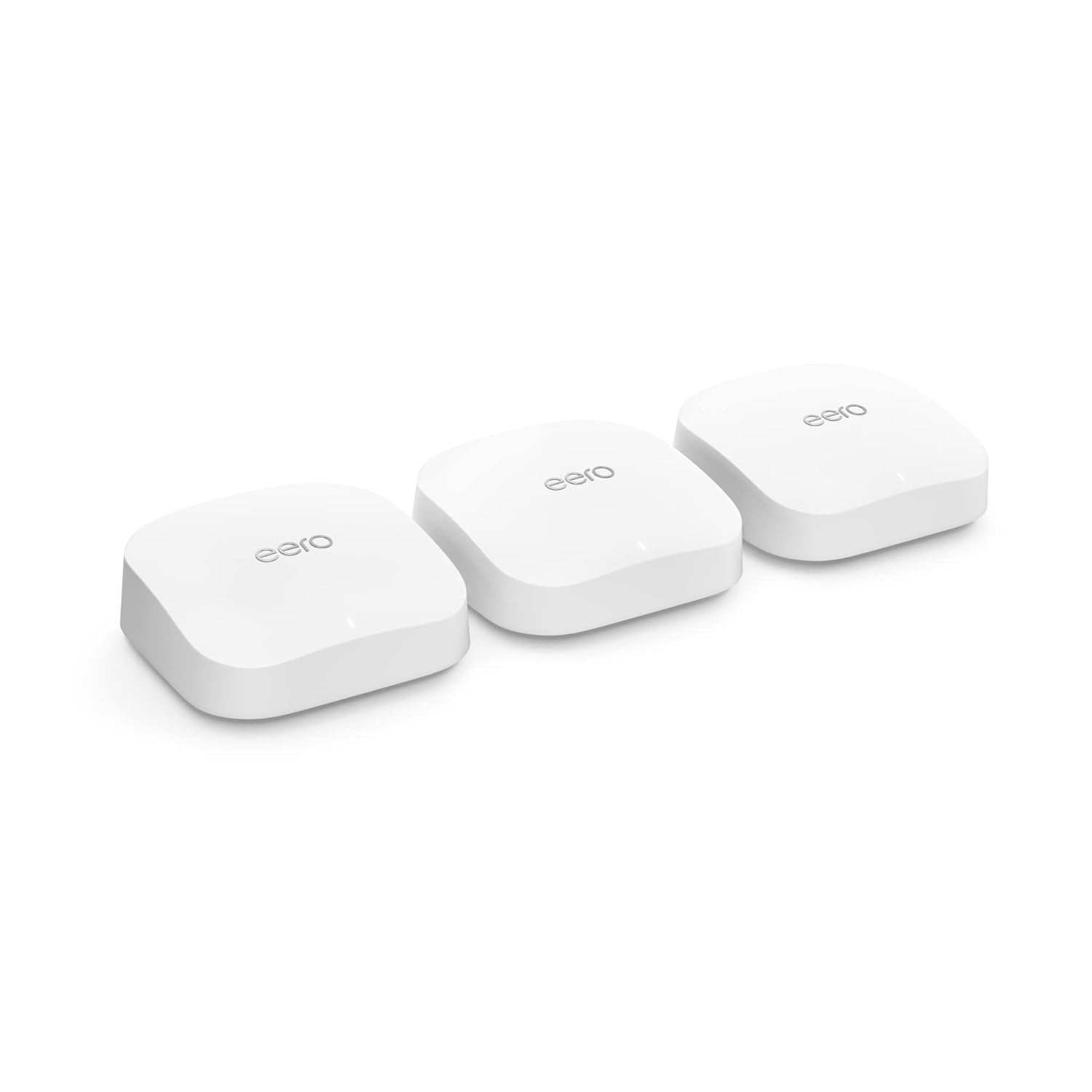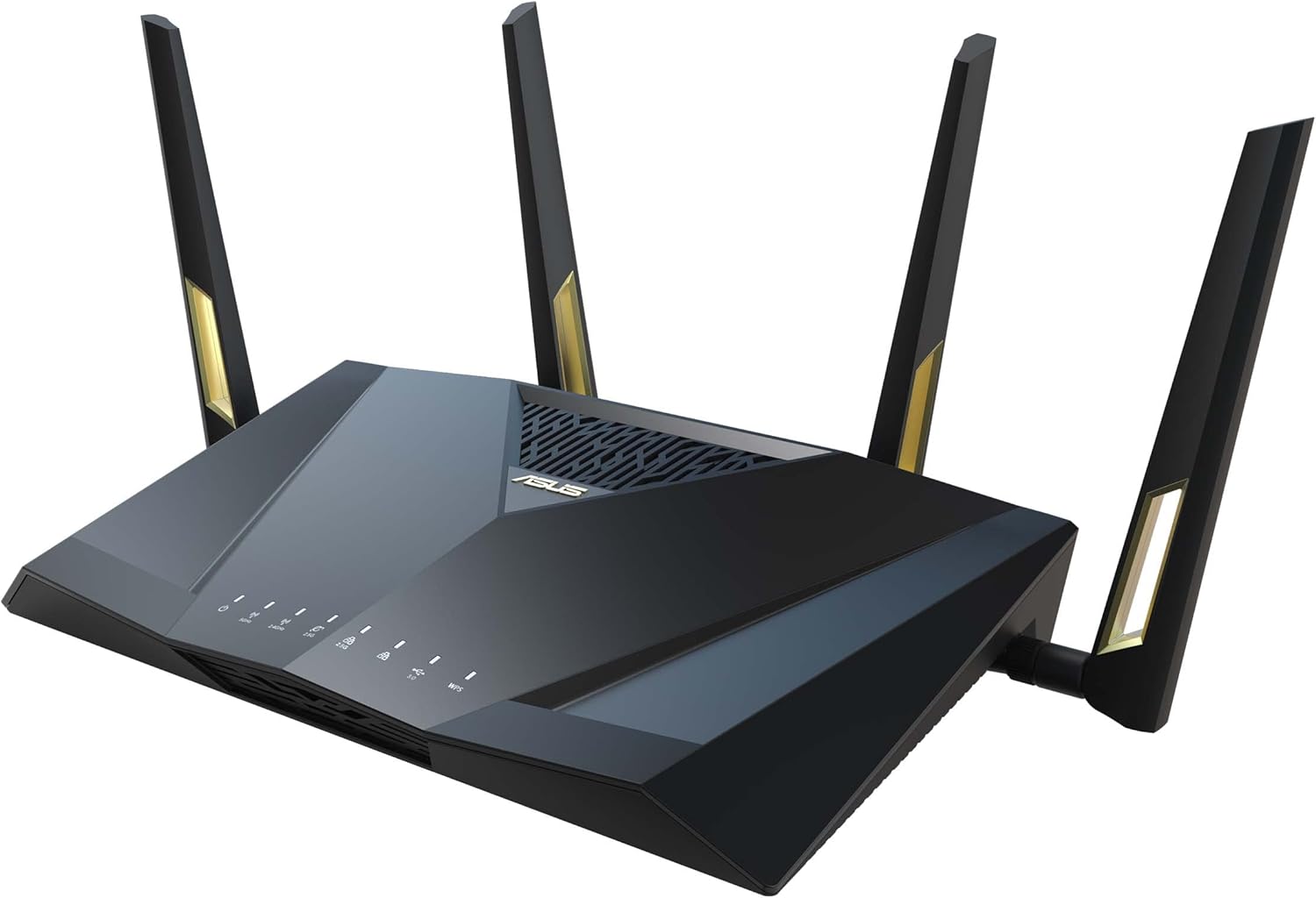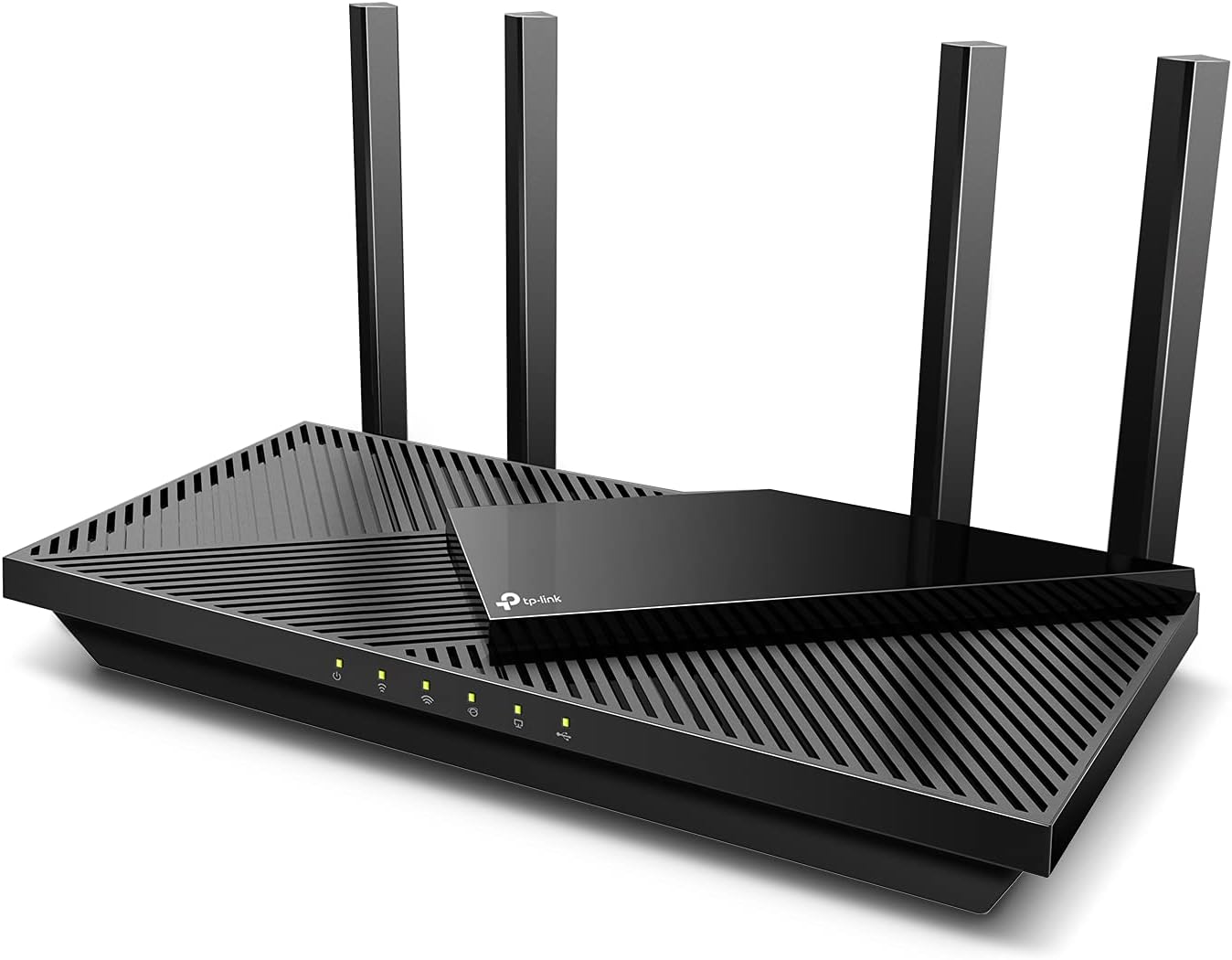In 2025, a stable and fast internet connection isn’t a luxury—it’s a necessity. From remote work and smart homes to 4K streaming and online gaming, our digital demands have skyrocketed. But if you’re still relying on a single router tucked in the corner of your home, you might not be getting the performance you need.
Enter the battle of the internet titans: Wi-Fi mesh systems vs. traditional routers. Choosing the right setup can mean the difference between seamless connectivity and frustrating dead zones. But which one is right for you?
In this guide, we’ll break down the pros and cons of each option, help you determine the best setup for your home, and even share top product picks to boost your signal and satisfaction.
A mesh Wi-Fi network is a modern wireless system designed to deliver fast, consistent internet coverage across your entire home—no matter the size, shape, or layout.
Instead of relying on a single router to broadcast Wi-Fi to every corner, a mesh system uses multiple devices called “nodes” or “satellites.” These nodes work together as a team, creating a unified wireless network that blankets your home in strong, reliable signal.
One node connects to your modem and acts as the main router.
The other nodes are placed strategically around your home.
These nodes communicate with each other, forming a “mesh” that automatically routes your devices through the strongest connection.
Think of it like a relay race: as you move from room to room, your phone or laptop is automatically handed off from one node to the next—without losing signal or needing to switch networks. You only see one Wi-Fi name, and the transition is seamless.
Seamless roaming – Stay connected as you move around the house without dropouts.
Self-healing network – If one node goes offline, the others reroute traffic to keep you connected.
Smart optimization – Mesh systems often prioritize bandwidth automatically, ensuring your streaming doesn’t suffer just because someone’s on a video call.
App-based control – Most systems come with easy-to-use apps for managing settings, parental controls, guest access, and even speed tests.
Large or multi-story homes
Homes with thick walls or awkward layouts
Families with many connected devices (smart TVs, thermostats, security cams, etc.)
Anyone tired of buffering, dead zones, or constant signal drops
In short, a mesh Wi-Fi system is like a team of routers working together, ensuring that you get fast, stable internet in every room—from the basement to the attic, and even out to the patio.
Choosing between a mesh Wi-Fi system and a traditional single router can feel overwhelming—but the right decision depends on your home layout, internet usage, and future needs. Let’s break down the pros and cons of each, so you can make a well-informed choice.
A traditional router is a standalone device that connects directly to your modem and broadcasts a Wi-Fi signal throughout your home. It’s a tried-and-true setup, and for many households, it still gets the job done.
Affordable price point:
Entry-level routers are significantly cheaper than mesh systems, often costing under €100. Great for budget-conscious users.
Straightforward setup:
Just plug it in, configure it (often via a browser), and you’re good to go—no need for extra nodes or apps.
Powerful performance for compact spaces:
High-end routers can deliver blazing speeds and low latency in small to medium-sized homes where signal range isn’t a major concern.
More control for tech-savvy users:
Many standalone routers offer advanced features like port forwarding, custom DNS, and manual QoS (Quality of Service) settings.
Limited range:
The signal weakens the farther you are from the router, especially in multi-floor homes or those with thick walls.
Dead zones and inconsistent speeds:
Large homes may experience Wi-Fi “blind spots” in certain rooms—like upstairs bedrooms or outdoor areas.
Signal congestion with many devices:
In busy households with 20+ connected devices, a single router can get overwhelmed, leading to slower speeds or drops.
Single point of failure:
If your router malfunctions or crashes, the entire network goes down until it’s rebooted or replaced.
A mesh Wi-Fi system is made up of multiple access points (or “nodes”) that work together to distribute your Wi-Fi signal more evenly and intelligently. Instead of broadcasting from one location, it creates a blanket of coverage across your entire home.
Whole-home coverage without dead zones:
By placing nodes in strategic spots (e.g., hallway, upstairs, garage), you ensure fast, stable Wi-Fi in every room—even in large or oddly shaped homes.
Seamless roaming experience:
As you move through your house, the mesh system automatically hands your device off to the nearest, strongest node. You won’t even notice the transition—just smooth, uninterrupted connection.
Scalable and flexible:
Need to cover a new extension, backyard office, or workshop? Simply add another node to your existing system—no need to start from scratch.
Smart traffic management:
Many mesh systems prioritize traffic intelligently, ensuring that streaming, video calls, or gaming aren’t interrupted even when the network is busy.
Easy app-based control:
Control everything from your phone—manage connected devices, create guest networks, set parental controls, and run speed tests with just a few taps.
Improved device handling:
Mesh systems handle multiple devices better using technologies like MU-MIMO and OFDMA, which are especially helpful in smart homes.
Higher upfront cost:
A good mesh system can range from €200 to €600 or more, depending on the number of nodes and features.
Setup can be more complex (initially):
While many systems are designed to be user-friendly, you’ll still need to place nodes correctly and understand app-based controls.
Performance depends on node placement:
If nodes are placed too far apart or near interference sources (like microwaves), performance can drop.
More devices = more potential failure points:
Although mesh systems are built to self-heal, more hardware means more complexity. A poorly performing node can drag down the network.
Not always needed for small homes:
If you live in a compact space, a mesh system might be overkill. You’ll pay more for features you won’t fully use.
| Feature | Traditional Router | Mesh Wi-Fi System |
|---|---|---|
| Price | ✅ Budget-friendly | ❌ More expensive upfront |
| Setup simplicity | ✅ Basic and quick | ⚠️ Slight learning curve |
| Coverage in large homes | ❌ May have dead zones | ✅ Excellent whole-home coverage |
| Multi-device support | ⚠️ May struggle under load | ✅ Handles many devices well |
| Roaming experience | ❌ Manual switching between bands | ✅ Seamless transitions |
| App control & smart features | ⚠️ Limited (depending on model) | ✅ Feature-rich and user-friendly |
| Upgrade flexibility | ✅ Easy to swap router | ✅ Expandable with additional nodes |
| Best for… | Small homes, single users | Large homes, families, smart homes |
When deciding between a traditional router and a mesh Wi-Fi system, the most important factor is your home environment—its size, layout, construction materials, and the way you use the internet. Let’s explore which setup works best for different types of homes and lifestyles.
Traditional routers still have a strong place in today’s homes—especially when used in the right environment. Here’s when they’re ideal:
Small apartments and studios (up to ~1,200 sq. ft.):
In compact living spaces, a single router can easily cover every corner without needing extra hardware.
One-floor homes with open layouts:
Fewer walls and floors mean fewer obstacles for the Wi-Fi signal, allowing a traditional router to work efficiently.
Casual internet users:
Perfect for browsing, emailing, video streaming, and occasional gaming or video calls.
Tech-savvy individuals or couples:
A good router with customizable settings can deliver excellent performance in smaller spaces.
Tight budgets:
Traditional routers are a cost-effective solution for those who don’t need full-home coverage or advanced features.
You live in a house with multiple floors or thick walls.
You often experience signal drops in certain rooms.
You plan to expand your smart home ecosystem significantly.
Mesh systems shine when coverage, consistency, and device capacity are priorities. They’re designed for more demanding environments and internet usage patterns.
Medium to large homes (1,500 to 5,000+ sq. ft.):
Mesh networks extend signal strength across floors, hallways, garages, and attics. You can place nodes where coverage drops.
Multi-story houses:
A router placed on one floor can struggle to reach others. Mesh nodes on each floor ensure a strong, consistent signal throughout.
Irregular home layouts or thick walls:
Concrete, brick, and other dense materials weaken Wi-Fi signals. Mesh systems route around these obstacles using node placement.
Smart homes with many connected devices:
With smart bulbs, cameras, thermostats, TVs, and voice assistants, the load adds up fast. Mesh systems handle device density more efficiently.
Large families or shared living spaces:
Multiple users streaming, gaming, or working from home need bandwidth and stability. Mesh Wi-Fi helps avoid lag and buffering.
Outdoor connectivity needs:
If you want Wi-Fi in the garden, patio, workshop, or garage, placing a mesh node nearby can deliver signal where routers typically can’t.
Frequent movers or expanding households:
Mesh systems are modular. If you move to a bigger home or add new rooms, just add more nodes—no need to replace the entire system.
You have a small home where one router already provides strong coverage.
You’re looking for a plug-and-play setup with minimal device management.
You’re on a very tight budget and don’t need advanced networking features.
Let’s go one step further and map common home scenarios to the ideal solution:
| Home Type | Recommended Setup | Why It Works |
|---|---|---|
| 40 m² studio apartment | Traditional router | Single floor, no signal interference—easy coverage |
| Two-bedroom apartment (80 m²) | High-end router | Moderate space, but a powerful router is usually sufficient |
| Townhouse with 3 floors | Mesh Wi-Fi system | Multiple floors and walls create dead zones—mesh solves this |
| Modern smart home | Mesh Wi-Fi system | Dozens of connected devices need a robust, scalable solution |
| Rural home with outdoor shed | Mesh with outdoor node | Large area, remote corners need node placement flexibility |
| Shared student flat | Router with range extender or mesh lite | Multiple users, limited space—hybrid setup may suffice |
| Retired couple in bungalow | Mid-tier router | Minimal usage, flat layout—simple and cost-effective |
In some cases, a hybrid setup works best. For example, you might:
Use a powerful router with range extenders (though not as seamless as mesh)
Add a wired access point in a remote room if running Ethernet is possible
Upgrade to a Wi-Fi 6 or 6E router to get better speed and device handling without fully switching to mesh
No two homes—or internet users—are the same. Whether you’re a casual browser, a hardcore gamer, or someone running a smart home filled with connected devices, choosing the right Wi-Fi hardware makes a huge difference.
We’ve rounded up some of the top-performing routers and mesh systems in 2025, categorized by use case and home size, and explained why they’re great—so you can make the best decision without guesswork.

If you’re looking for professional-grade coverage without diving into commercial networking gear, the ZenWiFi XT9 offers the perfect middle ground. This mesh system is built for high-traffic households—think remote workers, gamers, and streaming fans—all under one roof.
Each node supports tri-band connectivity, which includes a dedicated 5GHz backhaul. This means inter-node communication doesn’t interfere with your primary internet traffic, resulting in faster, more stable performance, even under heavy loads.
With up to 500 square meters of coverage with just two nodes, it’s ideal for multi-story homes or those with thick walls. The system also supports AiMesh, allowing you to combine it with other ASUS routers for extended custom setups.
The built-in security suite (AiProtection Pro) includes malicious site blocking and device quarantine, which adds a solid layer of protection—especially useful in smart homes. Advanced users will appreciate features like VPN support, bandwidth prioritization (QoS), and in-depth traffic analytics.
Recommended for: Large homes with many users and devices, or tech-savvy users who want total control and high performance.

The Nest Wi-Fi Pro is all about simplicity without sacrificing intelligence. Google has created a system that you can set up in minutes, manage from your phone, and forget about—because it just works.
Supporting Wi-Fi 6E, it unlocks the 6GHz band, which is less congested and capable of supporting faster speeds with lower latency. This is especially useful for homes that have lots of streaming and gaming happening simultaneously.
Coverage is excellent, with a 3-pack typically blanketing homes up to 350–400 square meters. The system auto-optimizes device connections to the best band, reducing interruptions during Zoom calls or Netflix binges.
It integrates seamlessly into Google’s ecosystem, so if you’re already using Nest thermostats, doorbells, or smart speakers, this is a natural fit. You can also control some functions via Google Assistant using voice commands.
What you give up in manual controls or custom features, you gain in ease of use, stability, and smart home synergy.
Recommended for: Families and everyday users who want effortless whole-home coverage with excellent integration into the Google ecosystem.

Eero, now under Amazon’s wing, has carved out a loyal following thanks to its rock-solid reliability and stress-free management. The Eero Pro 6E is their most capable system to date, and it’s built with dense smart home environments in mind.
Setup is guided entirely through the Eero app, which also enables remote management, device tracking, and parental control scheduling. One standout feature is automatic software updates, meaning your network stays secure and up-to-date without any effort on your part.
Performance-wise, it’s optimized for households with dozens of connected devices, distributing traffic intelligently to avoid slowdowns. It uses tri-band Wi-Fi and supports wired backhaul (via Ethernet), which is a major plus if your home is pre-wired or if you’re placing nodes in spots where signal might otherwise be weak.
Eero also supports thread and Zigbee protocols, which simplifies the management of smart home accessories like lights, locks, and sensors.
Recommended for: Tech-forward households with lots of IoT devices, or users who want a future-proof network with minimal hands-on management.

One of the most powerful consumer-grade routers on the market, the RT-AX88U Pro is a performance beast for anyone who wants maximum speed and granular control. It supports Wi-Fi 6E with eight Gigabit LAN ports, making it an excellent core for a hybrid wired-wireless network.
Unlike mesh systems that distribute performance evenly across space, this router focuses on concentrated power, delivering top-tier speeds to users within its range. In open-plan or single-floor homes, it’s more than enough for demanding households.
The real strength lies in its features: multi-gig WAN/LAN support, link aggregation, advanced traffic shaping, and deep firewall and VPN configuration options. The built-in interface is geared toward users who want to monitor usage in real-time or fine-tune their network settings manually.
Gamers will also appreciate the adaptive QoS, which prioritizes latency-sensitive traffic, and the support for port forwarding or NAT configurations with minimal hassle.
Recommended for: Gamers, remote workers, and advanced users who want high performance, multiple wired connections, and extensive control over their network.

This model hits the sweet spot for anyone seeking fast, modern Wi-Fi without overspending or overcomplicating things. The AX55 delivers reliable dual-band performance with Wi-Fi 6 support, and is well-suited for households with a moderate number of connected devices.
Installation is quick via the TP-Link Tether app, which walks you through setup and offers access to tools like parental controls, guest networks, and basic device monitoring. Speeds are more than enough for HD streaming, gaming, and daily web use.
It includes features like OFDMA and MU-MIMO, which help manage multiple simultaneous connections without slowing down the experience. While it doesn’t offer advanced network customization, it’s perfect for users who want to plug in, turn on, and enjoy strong Wi-Fi coverage in small to mid-sized homes.
Recommended for: Couples, small families, or apartment dwellers who want modern Wi-Fi features in a compact, affordable package.
Not directly. Mesh systems don’t change your internet plan’s maximum speed (that’s set by your ISP), but they help you get that full speed in every room. Traditional routers often lose signal strength as you move away from them. A mesh system ensures strong, consistent speeds across your home by distributing the signal more evenly through its multiple nodes.
In most small or one-bedroom apartments, a high-quality traditional router is more than enough. A mesh system might be overkill unless your apartment has unusually thick walls, is located on multiple levels (e.g. a duplex), or you plan to expand your network later. For most compact living spaces, a router with Wi-Fi 6 will give you great performance at a lower cost.
Yes, but it’s not always ideal. Some mesh systems allow you to connect to an existing router in “bridge mode” or “access point mode.” However, this setup can lead to double NAT issues, reduced performance, or limited features. For best results, most users replace their old router entirely and use the mesh system as the new primary router.
Yes, mesh systems are ISP-independent. As long as you have a modem that connects to your provider’s line, the mesh system can be connected to it via Ethernet and used to distribute Wi-Fi throughout your home. Be sure to disable Wi-Fi on your ISP’s modem/router combo if you’re replacing it with a mesh system.
It depends on your home’s size and layout. Here’s a quick guideline:
1,000–1,500 sq. ft.: 1–2 nodes
1,500–3,000 sq. ft.: 2–3 nodes
3,000–5,000+ sq. ft.: 3–4 nodes or more
Also consider walls, floors, and interference. For example, homes with thick concrete walls may need more nodes placed closer together for full coverage.
Absolutely—especially when using Ethernet backhaul. Mesh systems can prioritize gaming traffic or video calls using QoS (Quality of Service) features. However, for the lowest possible latency (ping), especially for competitive gaming, a direct wired connection is still the gold standard.
After diving deep into the world of mesh systems and traditional routers, one thing is clear: there’s no one-size-fits-all answer. The best choice depends entirely on your living space, the number of users and devices in your home, and how you use the internet.
You live in a small to medium-sized space, such as an apartment, flat, or single-story home.
Your internet usage is relatively light to moderate: browsing, video streaming, and video calls—not all at once and not by many users.
You’re looking for a cost-effective solution that’s simple to set up and maintain.
You prefer a centralized system without multiple access points or need for app-based configuration.
You’re a tech-savvy user who wants access to manual settings, firmware tweaks, and wired connections for specific devices.
Modern routers with Wi-Fi 6 or Wi-Fi 6E can offer fast, reliable, and efficient performance, even in multi-device households—so long as your space isn’t working against the signal range.
Your home is large, multi-level, oddly shaped, or has areas where your current router struggles to reach.
You want seamless coverage across all rooms—including attics, basements, garages, or patios—without dealing with dead zones.
Your household includes multiple users all online at once: gaming, streaming, attending online classes, or working remotely.
You’re building or already running a smart home with a lot of connected devices—lights, thermostats, speakers, cameras, and more.
You prefer a “set it and forget it” system with automatic updates, self-healing connectivity, and an intuitive mobile app.
Mesh networks shine when coverage, consistency, and scalability are your top priorities. They’re especially helpful when you expect your household tech ecosystem to grow over time.
Do you often experience weak signal or Wi-Fi dropouts in certain rooms?
→ If yes, a mesh system can help solve that instantly.
Is your current setup overwhelmed by multiple users or devices?
→ A high-performance router or mesh system with good device management features is ideal.
Do you plan to stay in the same home long-term, or are you expanding soon?
→ Mesh systems offer better flexibility and scalability for future-proofing.
Do you want to manage everything via app, or do you prefer manual control via browser interfaces?
→ Mesh systems usually favor app-based simplicity, while standalone routers offer more granular manual control.
In 2025, your internet setup is no longer just about speed—it’s about stability, reach, and intelligent management of all the devices in your home. Whether you’re streaming a movie, working remotely, or simply scrolling on your phone in the backyard, your Wi-Fi should be invisible in the best way—always there, always strong, always fast.
A traditional router may be the smarter choice if your needs are straightforward and your home layout is favorable. But if you’re tired of dead zones, need more range, or want to embrace the future of connected living, a mesh system is worth the investment.